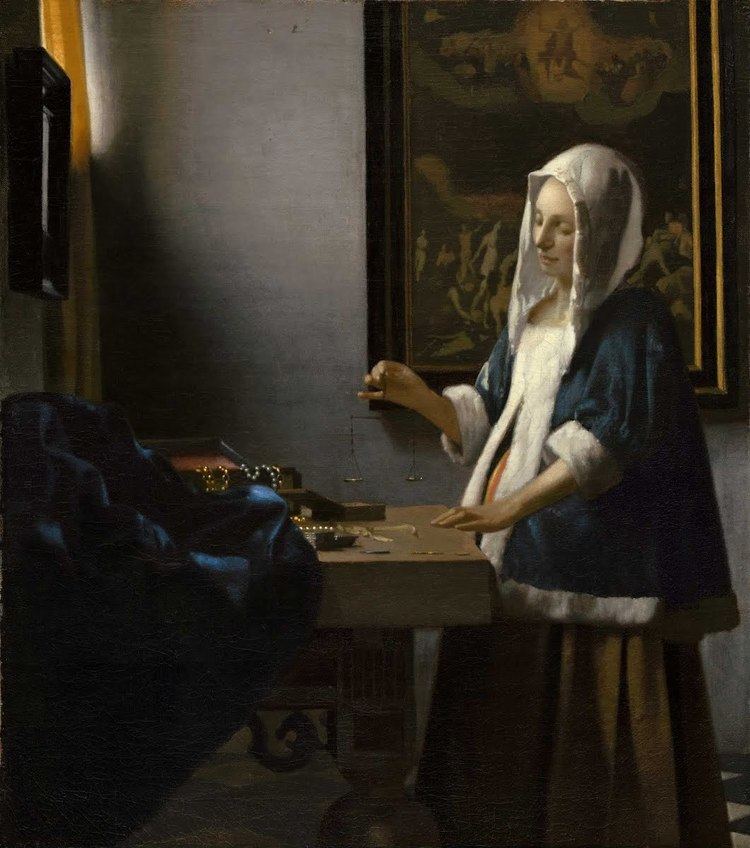Year 1662–1663 Dimensions 42 cm x 38 cm Periods Baroque, Dutch Golden Age | Genre History painting | |
 | ||
Similar Woman with a Water Jug, Woman in Blue Reading, A Lady Writing a Letter, The Procuress, Girl with a Red Hat | ||
Johannes vermeer woman holding a balance
Woman Holding a Balance, also called Woman Testing a Balance, is an oil painting by Dutch Baroque artist Johannes Vermeer.
Contents
- Johannes vermeer woman holding a balance
- Woman holding a balance
- Theme
- History
- Painting materials
- References
At one time the painting, completed 1662–1663, was known as Woman Weighing Gold, but closer evaluation has determined that the balance in her hand is empty. Opinions on the theme and symbolism of the painting differ, with the woman alternatively viewed as a symbol of holiness or earthliness.
Woman holding a balance
Theme
In the painting, Vermeer has depicted a young woman holding an empty balance before a table on which stands an open jewelry box, the pearls and gold within spilling over. A blue cloth rests in the left foreground, beneath a mirror, and a window to the left — unseen save its golden curtain — provides light. Behind the woman is a painting of the Last Judgment featuring Christ with raised, outstretched hands. The woman may have been modeled on Vermeer's wife, Catharina Vermeer.
According to Robert Huerta in Vermeer and Plato: Painting the Ideal (2005), the image has been variously "interpreted as a vanitas painting, as a representation of divine truth or justice, as a religious meditative aid, and as an incitement to lead a balanced, thoughtful life." Some viewers have imagined the woman is weighing her valuables, while others compare her actions to Christ's, reading parable into the pearls. Some art critics, including John Michael Montias who describes her as "symbolically weighing unborn souls", have seen the woman as a figure of Mary. To some critics who perceive her as measuring her valuables, the juxtaposition with the final judgment suggests that the woman should be focusing on the treasures of Heaven rather than those of Earth. In this perspective, the mirror on the wall may reinforce the vanity of her pursuits.
History
Completed in 1662 or 1663, the painting was previously called Woman Weighing Gold before microscopic evaluation confirms that the balance in her hands is empty. The painting was among the large collection of Vermeer works sold on May 16, 1696 in Amsterdam from the estate of Jacob Dissius (1653–1695). It received 155 guilders, considerably above the prices fetched at the time for his Girl Asleep at a Table (62) and The Officer and the Laughing Girl (approximately 44), but somewhat below The Milkmaid (177).
Painting materials
The first pigment analysis of this painting by Hermann Kühn revealed the use of ultramarine for the blue tablecloth and lead white for the grey wall. The pigment in the bright yellow curtain was identified as indian yellow. The subsequent technical investigations of the painting by Robert L. Feller (1974) and M.E. Gifford (1994) have shown that the painting had been extended by approximately five centimetre on every side at a much later date. The sample investigated by H. Kühn in 1968 was unfortunately taken from this extension. The proper pigment of the yellow curtain is lead-tin-yellow. The full pigment analysis according to the latest data is illustrated at Colourlex.
